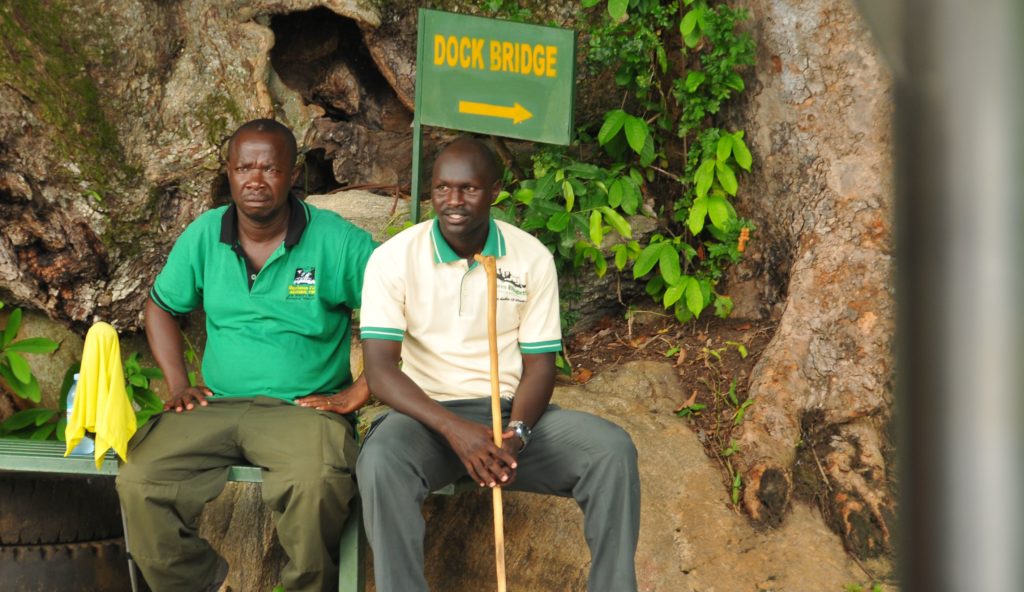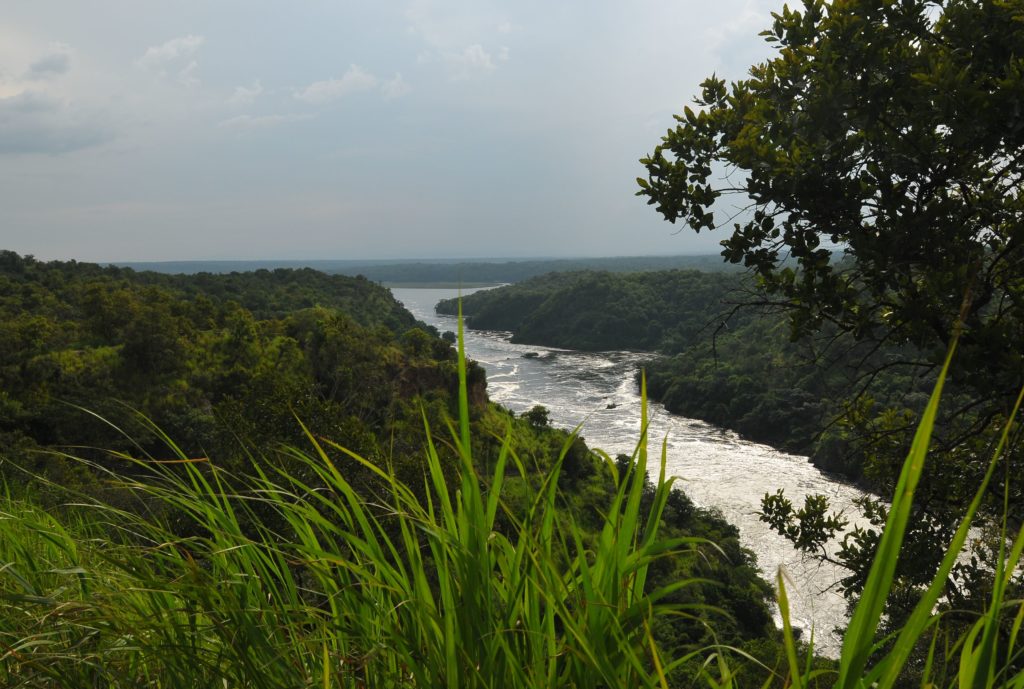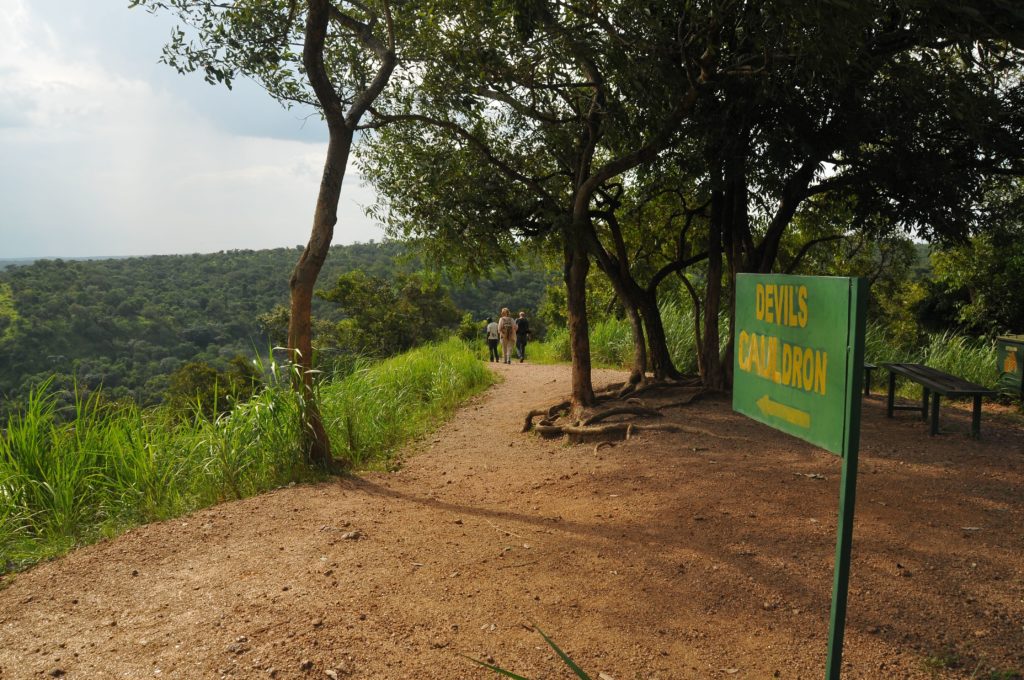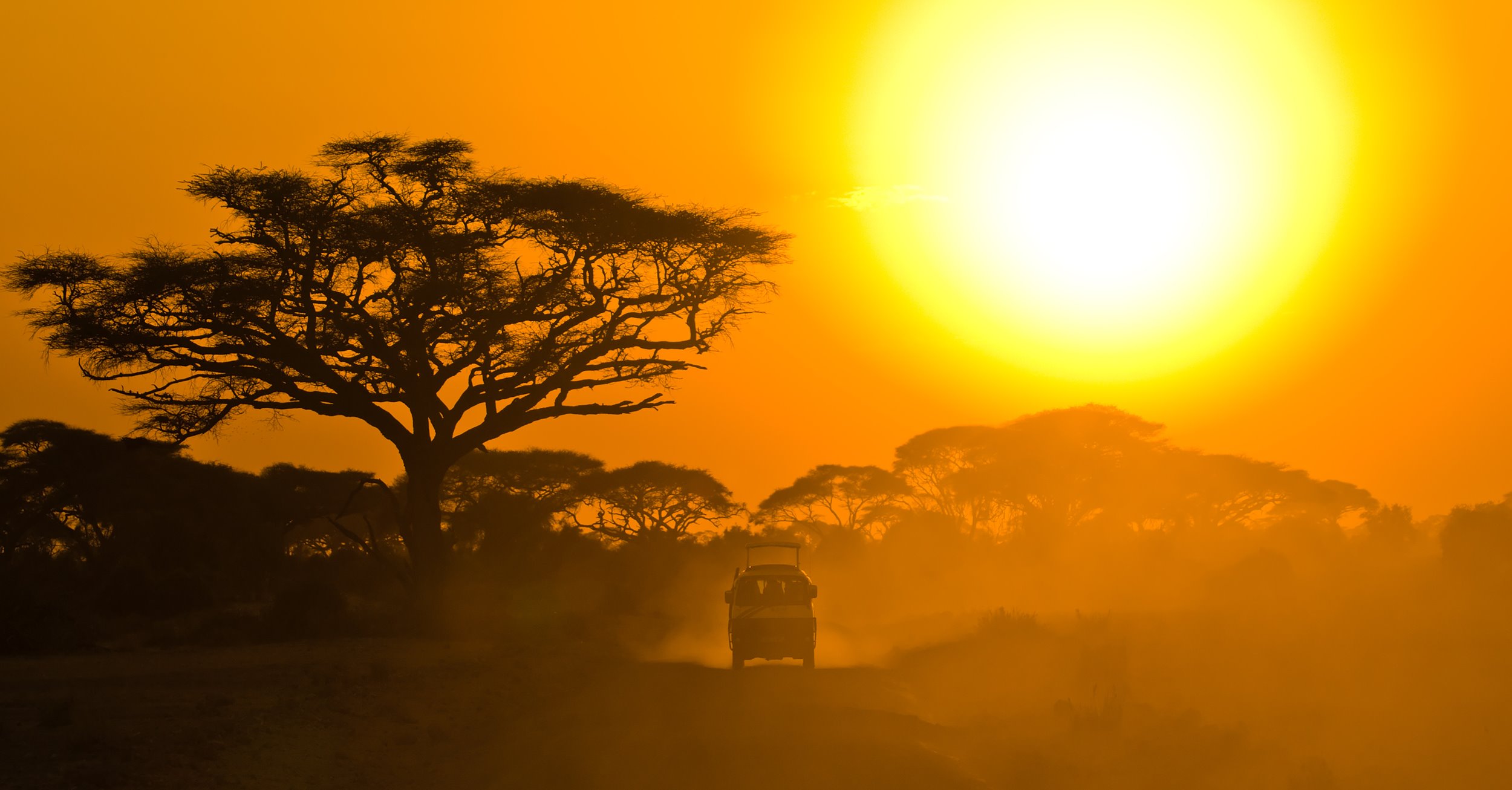From the banks of the world’s longest river, The Nile, to face-to-face encounters with endangered mountain gorillas in the misty forests of Bwindi, Uganda packs an unforgettable punch, as I experienced last year.
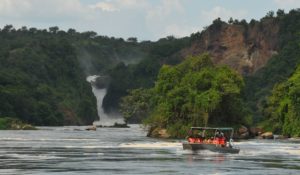 The Nile
The Nile
There are many different ways to experience the River Nile in Uganda including a visit to the source at Jinja, where you can raft the white water and stay on an island at the wonderful WildWaters lodge.
Not to be missed is a stay in Uganda’s best known and biggest park which straddles the Victoria Nile: Murchison Falls
Murchison Falls National Park is a spectacular park with bountiful wildlife from the ubiquitous Uganda Kob to critically endangered Nubian Giraffe, which lurch across the path in front of you and can be seen in huge herds visiting a salt lick on the banks of the Nile.
When we visited in August last year, in just one afternoon and morning game drive we saw a huge diversity of wildlife including lion, leopard and elephant. Murchison is an incredibly picturesque park and one of the highlights was watching the spectacular sunset over the Nile.
I stayed at the simple Pakuba Lodge close to the overgrown Ida Amin ruins which featured in the BBC2 ‘Earth’s Great Rivers’ series. The lodge is well-positioned on the southern bank of the Albert Nile. There are several lodges in this Pakuba area, as well as more luxurious options, for example Baker’s Lodge on the southern bank of the Victoria Nile. I would recommend 2-3 nights in this area.
A highlight of any stay in the park is a chance to cruise down the Nile and get up close to the roaring Falls themselves.
Cruises take around 90 minutes to float serenely downstream to Murchison Falls. This is an excellent way to see the river from a different perspective and we enjoyed good sightings of hippo, elephant and crocodile and the most spectacular view of pied kingfishers dancing above the water. The cruise is guided by a staff of three. There was a bar and washroom on the boat.
The boat briefly docks at the base of the Falls and guests have the option to return as they arrived, or to trek to the Top of the Falls.
The trek is around 3km and takes 45 minutes or so with plenty of stops to admire the sensational view. You walk with a guide, within a group. It’s not too challenging apart from the humidity which can be draining – it is important to carry enough drinking water with you as there are no visitor’s facilities. Surfaces are uneven and there are lots of steps so this activity is only recommended for those who are moderately fit and active.
The views of the Falls are superb and there are plenty of photo opportunities. Our guide, Ronnie, greeted us at the top with cold Nile beers which we enjoyed in the cooling spray of the Falls.
After a drink at the top of the Falls we continued on to our river lodge, Kabalega Wilderness – the drive took around 45 minutes. This lodge is very close to Baker’s Lodge on the Victoria Nile and enjoys sweeping views over the river. Hippos graze the lawn and wake you at sunrise with their song.
The North
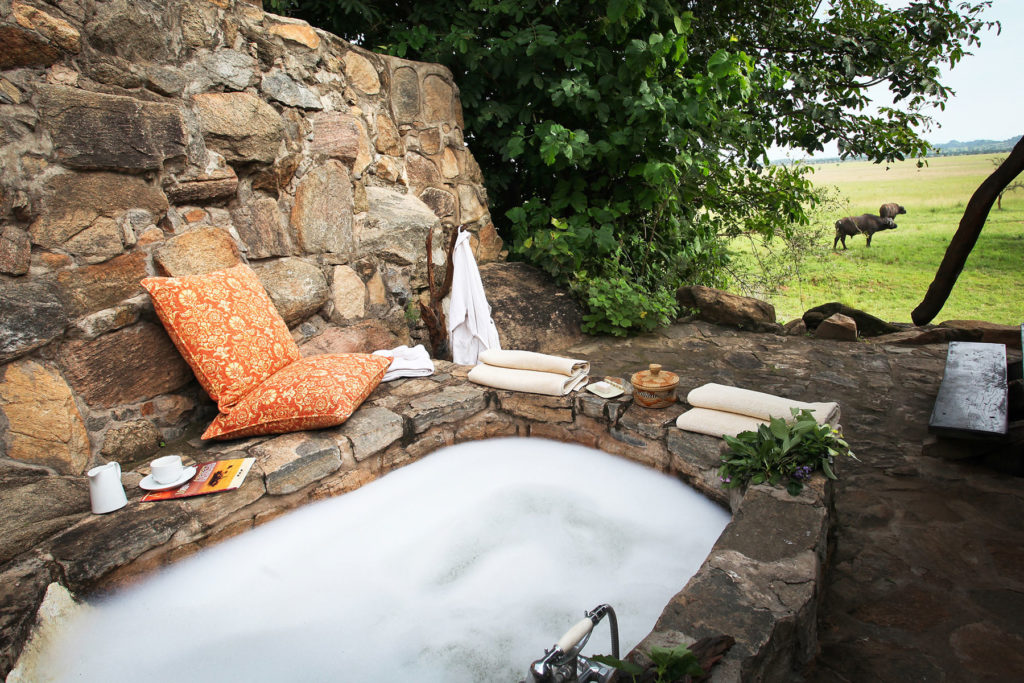
The Kidepo Valley is arguably Uganda’s most exciting destination.
Lying around 700km from Kampala, the park is Uganda’s most isolated. Two rivers, the Kidepo and Narus, divide the park and disappear in the dry season (June to August) which means wildlife congregates at the remaining waterholes in the Narus Valley around Apoka, the best base for safaris. Lion, cheetah, leopard, elephant, buffalo, zebra and giraffe can all be seen.
The nomadic Karamojong people live in this region and it is possible to arrange visits led by indigenous rangers.
Savannah
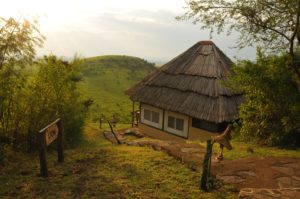 Queen Elizabeth National Park is split into two very distinct areas – the main park and the Ishasha sector to the south bordering Congo. The best way to experience both areas is to spend 2 nights in QE National Park and then an additional third night in or close to Ishasha (eiher at Ishasha Wilderness in the park itself, or just outside at Ishasha Jungle Lodge).
Queen Elizabeth National Park is split into two very distinct areas – the main park and the Ishasha sector to the south bordering Congo. The best way to experience both areas is to spend 2 nights in QE National Park and then an additional third night in or close to Ishasha (eiher at Ishasha Wilderness in the park itself, or just outside at Ishasha Jungle Lodge).
QE National Park is bordered by Lake George and the Kyambura Gorge in the East and Lake Edward in the West. The lakes are linked by the Kazinga Channel. You’ll find savannah, forest and wetland here so a full two days is recommended.
Ishasha is characterised by a more arid landscape. The north circuit offers classic savannah while the south circuit has many fig trees and is the best place to glimpse the famous tree-climbing lions.
Forest
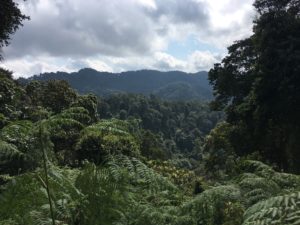 A 2 hour drive south from Ishasha brings you to the northern edge of Bwindi Impenetrable Forest. For gorilla trekking Bwindi is divided into different sectors and the lodge you stay at will be decided largely by the gorilla trekking permit you are allocated. Engagi Lodge and Mahogany Springs are favourites for guests staying in the north around Buhoma (closest base for gorilla trekking if coming from QE National Park) – trekking is moderately easier in Buhoma than in Rushaga further south which has steeper terrain. Rushaga is a full day’s drive from Ishasha. As you reach the outskirts of Bwindi, the road begins to climb and tea plantations and terraced crops dominate. The road is very narrow and steep in places – a hint of what’s to come on your gorilla trek!
A 2 hour drive south from Ishasha brings you to the northern edge of Bwindi Impenetrable Forest. For gorilla trekking Bwindi is divided into different sectors and the lodge you stay at will be decided largely by the gorilla trekking permit you are allocated. Engagi Lodge and Mahogany Springs are favourites for guests staying in the north around Buhoma (closest base for gorilla trekking if coming from QE National Park) – trekking is moderately easier in Buhoma than in Rushaga further south which has steeper terrain. Rushaga is a full day’s drive from Ishasha. As you reach the outskirts of Bwindi, the road begins to climb and tea plantations and terraced crops dominate. The road is very narrow and steep in places – a hint of what’s to come on your gorilla trek!
Gorilla Trekking in Bwindi
The main attraction during your stay in Bwindi is, of course, the opportunity to track mountain gorillas. This means you usually stay 2 nights in Bwindi.
The trek experience begins in the early morning as you gather at the main check point for a briefing with rangers from Uganda Wildlife Authority. You provide a copy of your passport during check-in, which helps to determine which gorilla group you will be allocated (trekkers are allocated into groups by their date of birth where possible).
We were in a group of 10 walkers, with three guides. Our allocated gorilla family, the Mucunguzi had 8 members including several young. We had to drive 30 minutes to the trek start point but some other groups began their trek from the meeting point – it just depends where your gorilla family is in the forest on the given day.
Our trek was led by several staff from the Uganda Wildlife Authority. At the start point, we chose to employ local people as porters – this service costs $15 cash (which you pay on your return to base direct to the porter). Even if you do not need a porter to carry your backpack it is recommended that you try and support the service to help people in the local community earn a wage. The porters are a great help, not only carrying your backpack, and minding your kit while you spend time with the gorilla family, but they also give you a helping hand on the steep sections and look after you. They are incredibly grateful for the work.
The trek for our group was around 12km and it took a couple of hours to get to the gorilla family with a very steep uphill section right at the beginning out of the village. The trail then became more undulating as we got into the thicker forest. We were walking at an altitude of around 2850m which does slow progress down.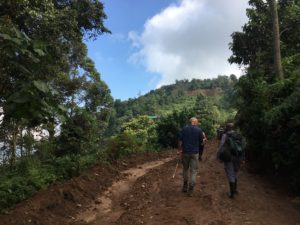
The trails are uneven and muddy and once you get off the main track the foliage is dense so proper sturdy walking shoes and long sleeves and trousers are recommended. Gloves are also beneficial, protecting you against thorns and nettles. I also had a wide brimmed hat and packed my small day pack with lots of water, a small picnic lunch provided by the lodge and some emergency sweets/snacks along with all my camera gear which I had in a dry bag.
We saw forest elephant tracks on the way and an array of birdlife. The sights and sounds of the forest were absolutely beautiful.
When we got close to the location of the gorilla family, we took off our backpacks and left our possessions with the porters. My first view of the gorilla family was an eyeball to eyeball with Mucunguzi – the silverback. This imposing figure, a monolith, was sat in a small clearing at the top of a steep slope just a couple of metres away. The encounter took my breath away. As the group moved to view him, he sloped off into the undergrowth.
The guides make great efforts to ensure everyone gets a good view at some point during the strict 60 minute visit time with the gorilla family. It’s not a static experience – the gorillas are foraging and moving about and you move with them – this can be challenging as the terrain can be steep and slippery with lush undergrowth so patience is key. Every experience will be different as it is governed completely by the movements of the gorilla family you visit. You need to pay special attention to the direction of your guides – we had several gorillas come barrelling out of the bushes down the slope towards us and had to move pretty quickly to get out of their way. 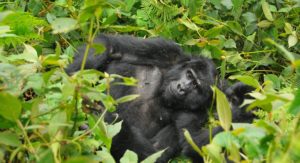
Buoyed by the encounter the trek home did not seem too arduous although torrential rain arrived within seconds of leaving the gorillas and hampered progress. Everything got absolutely soaked with the exception of my camera in the dry bag. Even though the lodge clean your boots for you and light a log fire in all the rooms, kit takes days to dry out.
As well as gorilla trekking, if you extend your stay in Bwindi, you can also walk with the Batwa people.
Lakes
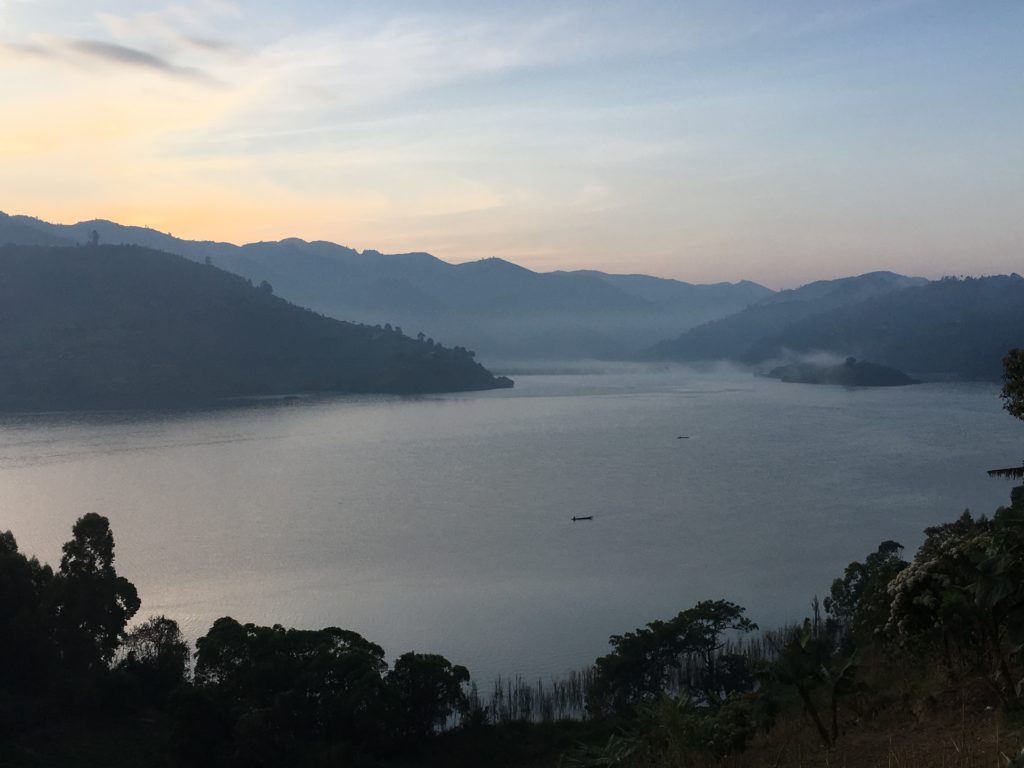
In this south-west corner of Uganda there are many beautiful lakes – a stay on the lake combines perfectly with time in the forests of Bwindi and Kibale.
Lake Mutanda and Bunyonyi are easily accessible from Bwindi and offer superb views of the Virunga volcanoes. Sit and watch the world go by, bird-watch from your balcony, take a cruise on the calm waters of the lake, or take advantage of additional activities such as trekking to see Golden Monkeys in the bamboo forest or visiting the Batwa pygmy tribe – the forest-keepers.
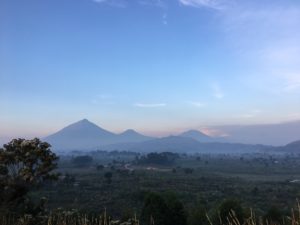 Write Uganda off as a place to solely go ape at your peril. There is far more to this beautiful country than you might at first think. In particular we were struck by the warmth of the people and the beauty of the landscape which evolves as you travel south towards the ring of volcanoes.
Write Uganda off as a place to solely go ape at your peril. There is far more to this beautiful country than you might at first think. In particular we were struck by the warmth of the people and the beauty of the landscape which evolves as you travel south towards the ring of volcanoes.
The safari experience itself is not quite as polished as further east in Kenya and Tanzania but for seasoned travellers this is part of the appeal.
A north to south style highlights tour including Murchison, QE National Park and Bwindi is a good place to start for a first experience of Uganda.

